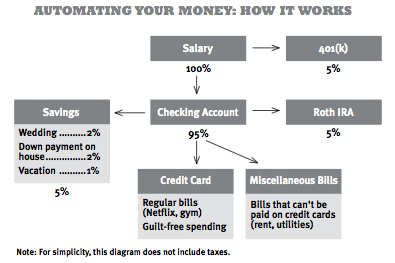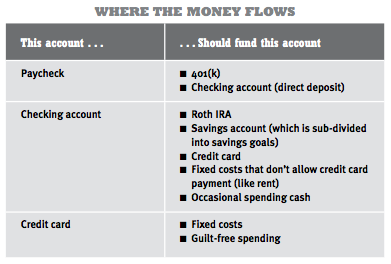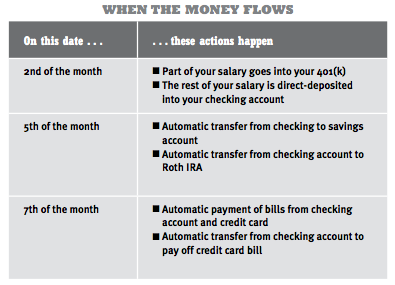By Jeremy Rolleston|2011-01-18T11:00:58+00:00January 18th, 2011|Travel|
It is the new year and we often say to ourselves – I want to travel more this year, explore the world, broaden my horizons, have more adventure ! Well in view of that I thought this post that I saw recently would be fantastic to fuel those thoughts.
Gary Arndt is the man behind Everything Everywhere, one of the most popular travel blogs in the world, and one of Time Magazine’s “Top 25 Best Blogs of 2010.” Since March 2007, Gary has been traveling around the globe, having visited more than 70 countries and territories, and gaining worldly wisdom in the process. Here’s some of the wisdom he has to share.
Enter Gary …
On March 13, 2007, I handed over the keys to my house, put my possessions in storage and headed out to travel around the world with nothing but a backpack, my laptop and a camera.
Three and a half years and 70 countries later, I’ve gotten the equivalent of a Ph.D in general knowledge about the people and places of Planet Earth.
Here are some of the things I’ve learned…
1) People are generally good.

Many people are afraid of the world beyond their door, yet the vast majority of humans are not thieves, murderers or rapists. They are people just like you and me who are trying to get by, to help their families and go about living their lives. There is no race, religion or nationality that is exempt from this rule. How they go about living their lives might be different, but their general goals are the same.
2) The media lies.

If you only learned about other countries from the news, you’d think the world was a horrible place. The media will always sensationalize and simplify a story. I was in East Timor when the assassination attempts on President José Ramos-Horta and Prime Minister Xanana Gusmão occurred in 2008. The stories in the news the next day were filed from Jakarta or Kuala Lumpur, not Dili. It was all secondhand news. I was in Bangkok during the political protests this year, but you’d never have any idea they were happening if you were not in the immediate area where the protests were taking place. The media makes us scared of the rest of the world, and we shouldn’t be.
3) The world is boring.

If there isn’t a natural disaster or an armed conflict, most places will never even be mentioned in the news. When is the last time you’ve heard Laos or Oman mentioned in a news story? What makes for good news are exceptional events, not ordinary events. Most of the world, just like your neighborhood, is pretty boring. It can be amazingly interesting, but to the locals, they just go about living their lives.
4) People don’t hate Americans.

I haven’t encountered a single case of anti-Americanism in the last three-and-a-half years. Not one. (And no, I don’t tell people I am Canadian.) If anything, people are fascinated by Americans and want to know more about the US. This isn’t to say they love our government or our policies, but they do not have an issue with Americans as people. Even in places you’d think would be very anti-American, such as the Middle East, I was welcomed by friendly people.
5) Americans aren’t as ignorant as you might think. (* Jeremy – not sure I agree totally on this Gary)

There is a stereotype that Americans don’t know much about the rest of the world. There is some truth to that, but it isn’t as bad as you might believe. The reason this stereotype exists is because most other countries on Earth pay very close attention to American news and politics. Most people view our ignorance in terms of reciprocity: i.e. “I know about your country, why don’t you know about mine?” The truth is, if you quizzed people about third-party countries other than the US, they are equally as ignorant. I confronted one German man about this, asking him who the Prime Minister of Japan was. He had no clue. The problem with America is that we suffer from the same problem as the rest of the world: an obsession with American news. The quality of news I read in other parts of the world is on par with what you will hear on NPR.
6) Americans don’t travel.

This stereotype is true. Americans don’t travel overseas as much as Brits, Dutch, Germans, Canadians or Scandinavians. There are some good reasons for this (big country, short vacation time) and bad ones (fear and ignorance). We don’t have a gap year culture like they have in the UK and we don’t tend to take vacations longer than a week. I can’t think of a single place I visited where I met Americans in numbers anywhere close to our relative population.
7) The rest of the world isn’t full of germs. (* Jeremy – again I’m not so sure of this either Gary)

Many people travel with their own supply of water and an industrial vat of hand sanitizer. I can say in full honestly that I have never used hand sanitizer or gone out of my way to avoid contact with germs during my travels. It is true that in many places you can get nasty illnesses from drinking untreated water, but I don’t think this means you have be a traveling Howard Hughes. Unless you have a particularly weak immune system or other illness, I wouldn’t worry too much about local bugs. (* Jeremy – within reason I think Gary. Precaution is not a bad thing as the body gets used to fighting the bugs it knows)
8) You don’t need a lot stuff.

Condensing my life down from a 3,000 sq/ft house to a backpack was a lesson in knowing what really matters. I found I could get by just fine without 97% of the things I had sitting around my home. Now, if I purchase something, I think long and hard about it because anything I buy I will have to physically carry around. Because I have fewer possessions, I am more likely to buy things of higher quality and durability.
9) Traveling doesn’t have to be expensive.

Yes, if you insist on staying in five-star hotels and luxury resorts, travel can be very expensive. However, it is possible to visit many parts of the world and only spend $10-30 per day. In addition to traveling cheap, you can also earn money on the road teaching English or working on an organic farm. I’ve met many people who have been able to travel on a little more than $1,000/month. I met one man from the Ukraine who spent a month in Egypt on $300.
10) Culture matters.

Many of our ideas for rescuing other countries all depend on them having similar incentives, values and attitudes as people in the West. This is not always true. I am reminded of when I walked past a Burger King in Hong Kong that was full of flowers. It looked like someone was having a funeral at the restaurant. It turned out to be people sending flowers in celebration of their grand opening. Opening a business was a reason to celebrate. In Samoa, I had a discussion with a taxi driver about why there were so few businesses of any type on the island of Savai’i. He told me that 90% of what he made had to go to his village. He had no problem helping his village, but they took so much that there was little incentive to work. Today, the majority of the GDP of Samoa consists of remittances sent back from the US or New Zealand. It is hard to make aid policies work when the culture isn’t in harmony with the aid donors’ expectations.
11) Culture changes.

Many people go overseas expecting to have an “authentic” experience, which really means they want to confirm some stereotype they have in their mind of happy people living in huts and villages. They are often disappointed to find urban people with technology. Visiting a different place doesn’t mean visiting a different time. It’s the 21st Century, and most people live in it. They are as likely to wear traditional clothes as Americans are to wear stove top hats like Abraham Lincoln. Cultures have always changed as new ideas, religions, technologies sprang up and different cultures mingled and traded with each other. Today is no different.
12) Everyone is proud of where they are from.

When you meet someone local in another country, most people will be quick to tell you something about their city/province/country that they are proud of. Pride and patriotism seem to be universal values. I remember trying to cross the street once in Palau, one of the smallest countries in the world, and a high school kid came up to me and said, “This is how we cross the street in PALAU!” Even crossing the street became an act to tell me about his pride for his country. People involved in making foreign policy should be very aware of this.
13) America and Canada share a common culture.

This may irk Canadians, but we really do share a common North American culture. If you meet someone overseas, it is almost impossible to tell if they are American or Canadian unless they have a particularly strong accent, or they pronounce the letter “z.” It is easier to tell where in England someone is from than it is to tell if someone is from Denver or Toronto. We would probably be better off referring to a “North American” culture than an “American” culture. What differences do exist (Quebec being the exception) are more like differences between states and regions of a similar country. (*Jeremy – that was Gary’s words not mine 🙂 but in a worldwide sense he is right)
14) Most people have a deep desire to travel around the world.

Not shocking, but every day I meet people who are fascinated by what I do and how I live. The desire to travel is there, but fears and excuses usually prevent people from doing it. I understand that few people can drop what they are doing and travel around the world for three years, but traveling overseas for even a few months is within the realm of possibility for many people at some point in their lives. Even on an island in the middle of the Pacific, people who would probably never leave their home island talked to me of wishing they could see New York or London for themselves one day. I think the desire to explore and see new things is fundamental to the human experience.
15) You can find the internet almost everywhere.

I have been surprised at where I’ve found internet access. I’ve seen remote villages in the Solomon Islands with a packet radio link to another island for their internet access. I’ve been at an internet cafe in the Marshall Islands that accessed the web via a geosynchronous satellite. I’ve seen lodges in the rainforest of Borneo hooked up to the web. I once counted 27 open wifi signals in Taipei on a rooftop. We truly live in a wired world.
16) In developing countries, government is usually the problem.

I have been shocked at the level of corruption that exists in most developing countries. Even if it is technically a democracy, most nations are run by and for the benefit of the elites that control the institutions of power. Political killings, bribery, extortion and kickbacks are the norm in many places. There is little difference between the Mafia and the governments in some countries I’ve visited. The corruption in the Philippines was especially surprising. It isn’t just the people at the top who are corrupt. I’ve seen cops shake people down on the street for money, cigarettes or booze.
17) English is becoming universal.

I estimated that there were at least 35 native languages I would have had to have learned if I wanted to speak with locals in their own tongue. That does not include all the languages found in Papua New Guinea or Vanuatu or regional dialects. It is not possible for humans to learn that many languages. English has become the de facto second language for the world. We are almost to a point where there are only two languages you need to know: whatever your parents speak… and English. English has become so popular it has achieved an escape velocity outside of the control of the US and UK. Countries like Nigeria and India use it as a unifying language in their polyglot nations. Other countries in the Pacific do all their schooling in English because the market just isn’t there to translate textbooks into Samoan or Tongan.
18) Modernization is not Westernization.

Just because people use electricity and have running water doesn’t mean they are abandoning their culture to embrace western values. Technology and culture are totally different. Japan and South Korea are thoroughly modern countries, but are also thoroughly Asian. Modernization will certainly change a culture (see #11 above), but that doesn’t mean they are trying to mimic the West.
19) We view other nations by a different set of criteria than we view ourselves.

On the left, people who struggle the hardest for social change would decry changes in other countries that they view as a result of globalization. On the right, people who want to bring democracy to other countries would be up in arms at the suggestion that another country try to institute change in the US. In both cases, other nations are viewed by a different set of rules than we view ourselves. I don’t think most people around the world want the help or pity of the West. At best, they would like us to do no harm.
20) Everyone should travel.

At some point in your life, whether it is after college or when you retire, everyone should take an extended trip outside of their own country. The only way to really have a sense of how the world works is to see it yourself.
###
You can subscribe to Gary’s blog at http://feeds.feedburner.com/EverythingEverywhere, or follow him on Facebook.







































